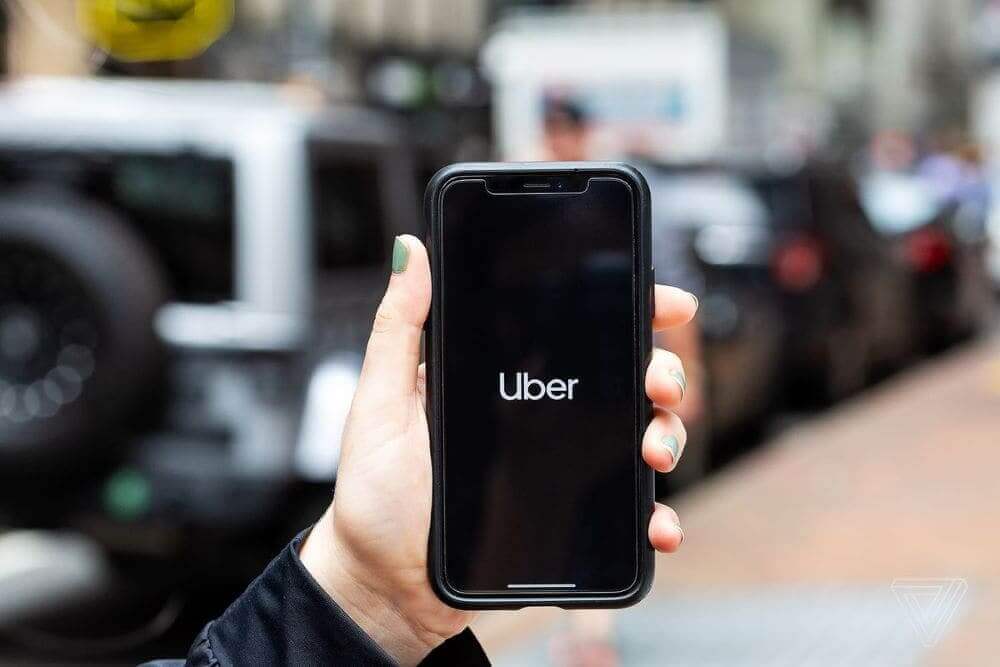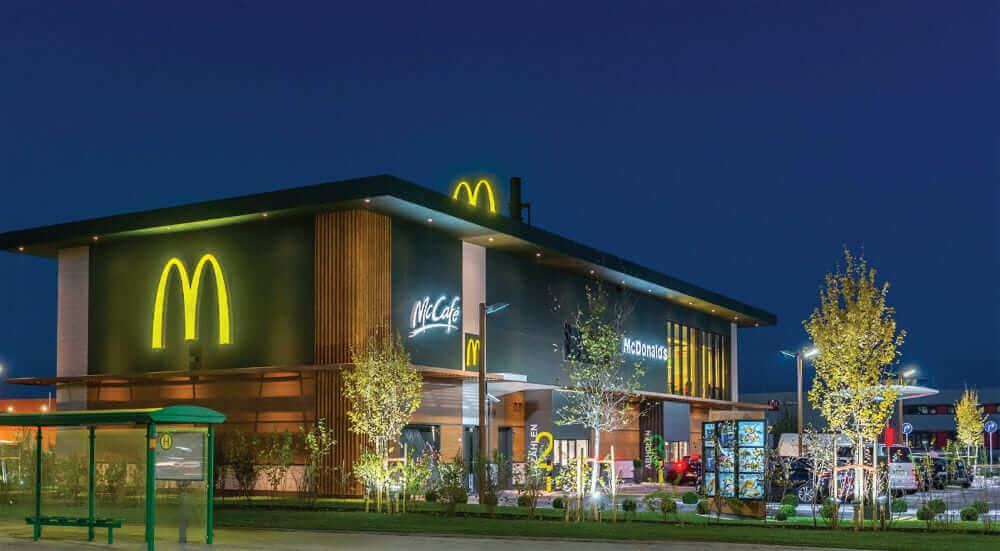Imagine your brand becoming a global household name, instantly recognised across the globe. These 10 Examples of Powerful Global Branding didn’t just survive — they thrived by mastering the art of global branding.
Global branding is more than just expanding your reach—it’s about creating a brand identity that resonates worldwide. It’s not enough to translate your website or launch a few international ads. To truly stand out on the global stage, your brand must be synonymous with high-quality service and unforgettable customer experiences.
If you want to transform your business from just another name in the market to a powerful brand with global recognition, a strategic approach is key. In this article, we explore 10 examples of powerful global branding that set industry standards and inspire success.
Table of Contents
10 Examples of Powerful Global Branding
There is no better way to learn than to take in the knowledge from more experienced brands. The following companies have found the key to establishing their names as global representatives for high-quality products and services and showed some outstanding global branding in action.
1. Apple: Innovation That Redefines Expectations

We can easily say that Apple is one of the most successful global brands of our generation. No matter where you go, everyone has heard of their brand and they associate it with high-end products, unique design, bright stores, and great employees.
Their customer service is definitely worth mentioning because even though they have opted for a one-size-fits-all strategy, the protocol of each of its worldwide stores is tailored to local tastes. They maintain the same look in all locations but their content on the Apple site is carefully translated and localized for international audiences.
Key Takeaway: Innovation paired with high-quality design can set your brand apart on a global stage.
2. Coca-Cola: Consistency Across Cultures

There is no way that we can speak of global branding without mentioning Coca-Cola. They are veterans of this business and they have shown us how consistent quality and outstanding marketing strategies can keep one and the same product on the throne for decades.
In 1980s and 1990s, when the company was a newbie on the global stage, standardized products and messaging resulted in a backlash against American imperialism. For that reason, in 2000, Coca-Cola introduced its “think local, act local” marketing strategy to increase local sensitivity. That has only made this brand stronger and helped them to become one of the most famous brands in the world.
They promote the same enduring and universal values such as happiness, family, and sharing and they combine that with the product and messaging localization.
Key Takeaway: Consistency builds trust and recognition in every market.
3. Starbucks: Creating a Global Coffee Culture

Their success is attributed to real customer experience around coffee consumption. The emphasis is on classy design, cozy atmosphere, custom-made coffee, friendly staff, and fast service.
Simple touches such as adding round tables so that the customers who come alone don’t feel lonely show how much they care and pay attention to little details. They are one of the signature parts of the every-day life of Millennials and social media has managed to promote their global brand even more. By offering the same high-quality service all around the globe, they share the thought that we are all connected in some way.
The famous coffee brand was also one of the first within the industry to capitalize on developing and implementing a valuable CRM system. They furthered the firm’s brand image by adding a personalized reward system via mobile applications.
Key Takeaway: Create an experience around your product to elevate your brand globally.
4. ZARA: Fast Fashion with Speed and Adaptability

This European company has succeeded in taking over the world despite the competitive market. Their secret is in copying high-end latest fashion trends and making them affordable for a larger mid-price market no matter which country is in question.
Zara is committed to adjusting to a broad spectrum of consumers, spread across different cultures and age groups. They put emphasis on these core values: beauty, clarity, functionality, and sustainability. Zara recognizes the customer as its most valuable brand asset and that is why they grant amazing customer service in every store in the world.
Key Takeaway: Speed and adaptability in delivering what consumers want, when they want it, can solidify your brand’s place in the market.
5. Airbnb: Redefining Hospitality with a Personal Touch

Who would’ve said that we would be open to staying in a stranger’s home and even so, trustingly paying for the accommodation to strangers all around the world? Well, Airbnb’s praised global branding has managed to convince us that this is something we should do.
Their dedicated localization department has made their services accessible around the globe and their captivating storytelling has proved to be essential for developing trust and a sense of community between hosts and travelers. The Chief Marketing Officer developed AirBnB’s global strategy that has enabled the company to extend its brand to over 190 countries.
Key Takeaway: Building a brand around community and unique customer experiences can foster a deep, emotional connection with a global audience.
6. Ikea: Affordable Design for the Everyday Consumer

This company knows exactly what people need in today’s fast-paced world and that is low price, sustainability, form, function, and quality all in one. As one of the world’s most recognized brands, they found a way to deliver that and to show the ability to understand the needs of their international customers.
Ikea tends to retain the same elements but the room sets vary from store to store in order to suit local traditions. For example, in Japan, they will feature tatami mats which is a traditional Japanese floor covering. They have re-imagined the way we shop by creating a whole new family-friendly concept.
Key Takeaway: Offering affordable, practical solutions that cater to the needs of everyday consumers can create a universally appealing brand.
7. Uber: Disrupting Industries Through Convenience

This global brand has shown up abruptly and swept the market by understanding the people’s transportation needs and filling the gap between taxis and private chauffeurs. Uber lessened the trouble of quickly finding transportation by creating an online app which easily connects us to a driver anywhere in the world.
By making their services universal across the globe, they have automatically created a great marketing strategy considering that when we travel to a foreign country, we will definitely use a transportation service which we are familiar with rather than struggling to find a taxi or public transportation.
Key Takeaway: Convenience and innovation can disrupt established industries and position your brand as a global leader.
8. McDonald’s: Localization Done Right

One of the key elements of McDonald’s global success is their uniformity. No matter which country you visit, McDonald’s will grant the same quality, experience, and food. Consumers rely on consistency and equal value regardless of the location and that is exactly what McDonald’s provides them.
We can also contribute their success to their cultural awareness. For example, in Thailand McDonald’s offers a “Samurai Pork Burger,” unique to the area. In addition to their universal meals, McDonald’s has added some customized offers in almost all of the countries they have entered into, adjusting to the local desires of the consumers they serve.
Key Takeaway: Smart localization allows your brand to thrive in different markets while maintaining a consistent global identity.
9. Amazon: Customer-Centric Innovation at a Global Scale

This brand lets its service and its customers speak on their behalf, so they put their trust in numerous reviews, free deliveries, and recommendation modules to help boost sales. Considering that they are only an online store, they have relied on the strategic use of SEO and affiliate marketing combined with a powerful supply chain and excellent customer service to establish their brand name globally.
According to Brand Finance, Amazon has officially replaced Google as the most valuable brand in the world. Their 500-strong ranking shows how digitally-obsessed the world is, with technology accounting for the same amount of value as telecoms, retail, and automobiles combined. They took advantage of the digital era and made the most of it.
Key Takeaway: A relentless focus on customer needs, paired with constant innovation, can turn your brand into an industry giant.
10. L’Oréal: Beauty for All—A Commitment to Inclusivity

As a world leader in beauty, L’Oréal is present in 130 countries on five continents. Their mission is to provide the best and most innovative products in cosmetics to women and men around the world. The brand also shows high respect for diversity which only makes them even more appealing to people in different countries.
By cleverly combining deep research and development with strong and strategic marketing campaigns and distribution they successfully attracted the attention of different kinds of consumers. One of their strategies is to keep buying new local brands which affirms their leadership globally. With massive media budgets and globally-known celebrity endorsements, they are one of the best examples of a successful marketing campaign.
Key Takeaway: Embracing diversity and creating products that cater to a wide audience can strengthen your brand’s global presence.
How to Achieve Global Branding?
Before we conclude with this topic, let’s address the elements of global branding which these powerful brands have in common. Even though they are conquering completely different industries, they have some approaches in common which assist them in overtaking the world with their products.
- Corporate identity – Successful brands use their corporate identity to reassure customers and distributors that the company is reliable and that it stands behind its products.
- Consistency – There needs to be a balance between the extent to which brand names differentiate product lines or establish a common identity across different products.
- Connectivity – The use of corporate brand endorsement as a name identifier or logo connects the different product brands to the company which helps to evoke trust in customers, distributors, and partners.
- Localization – The brand needs to speak to its international audiences and the translation needs to be high-quality in order not to lose the intended message.
For that purpose, successful companies use translation services and translation review websites which can help you find your perfect translator. That way you won`t lose the essence of your slogans and beliefs.
- Universally appealing messaging – The message which is being spread and needs to be universally understood or adapted to different markets. Having an understanding of local culture and tastes is a necessity if you want to achieve this.
- Adaptability– Having a strong grasp of what is demanded in all local segments and what are their purchasing habits helps the brands to adapt to the needs of different cultures.
- Uniqueness – Even though some of the world-famous brands are within the same industry, they still found a way to express their authenticity. It’s impossible to establish a global brand name without having the it-factor which will enable you to stand out from the crowd.
Some Final Thoughts
Building an outstanding global brand is a real challenge. Incorporating and spreading global messaging and localized strategies are key to success across international markets, but they demand extra creativity and persistence.
These brands have taught us so much just with their innovative approaches and strategic ideas. They can be a great example and a lesson for everyone who decides to be brave enough to establish itself as a global brand.
Want your brand to stand alongside these global giants? Start by defining your core values, stay consistent, and above all, connect emotionally with your audience.
You will also like the article we wrote about: Examples of Powerful Brand Positioning and The Most Expensive Logos In The World.
For more on the evolution of famous logos, check out our piece on Famous Logo Evolution
Further Reading:
-
- Learning from the World’s Most Famous Logos
- Best Global Rebrands and Logo Redesigns of Major Brands
- Branding Beyond Borders: Elevating Your Global Presence through Impactful Logo Design
- Logo Design Trends to Watch Out for in 2023: Stay Ahead of the Curve!
- Every Good Logo Tells a Story! 40 Famous Brand Logos & Their Hidden Secrets
- Famous Logo Designers and Their Distinctive Style
- Using the Golden Ratio in Logo Design
- 20 Famous Brand Logos Constructed in Grid Systems
- The Different Types Of Logo Design
Join The Logo Creative Community
We hope these 10 Examples of Powerful Global Branding have been insightful. If you would like more personal tips, advice, insights, and access to our community threads and other goodies, join me in our community. You can comment directly on posts and have a discussion.
*TIP – We use and recommend DesignCuts for all your fonts, mockups and design bundles.


Author Bio
Andrew Marriott is the owner and founder of The Logo Creative™. He is an award-winning designer with over two decades of experience designing logos and specialising in branding for companies worldwide.
FAQ – Everything You Need to Know About Global Branding
What makes a brand successful globally?
A globally successful brand maintains consistency in its core values and visual identity while adapting to local cultures and consumer preferences. By creating an emotional connection with consumers, brands can build loyalty across different markets.
How can small businesses implement global branding strategies?
Small businesses can start by defining their brand’s core message and ensuring consistency across all platforms. Leveraging digital marketing and social media can help smaller brands reach international audiences without a large marketing budget.
Why is consistency important in global branding?
Consistency builds trust and recognition. Whether it’s your logo, color scheme, or tone of voice, maintaining the same elements across regions ensures that consumers recognize and trust your brand.
Can local adaptation affect global branding?
Yes, brands like McDonald’s have proven that adapting to local tastes and cultures can enhance global success. However, the key is balancing local adaptation without compromising the brand’s global identity
What are the best practices for building a global brand?
Successful global branding requires:
Strategic use of technology and innovation, Consistency in visual identity and messaging, Emotional connection with the audience, Adaptation to local markets.

